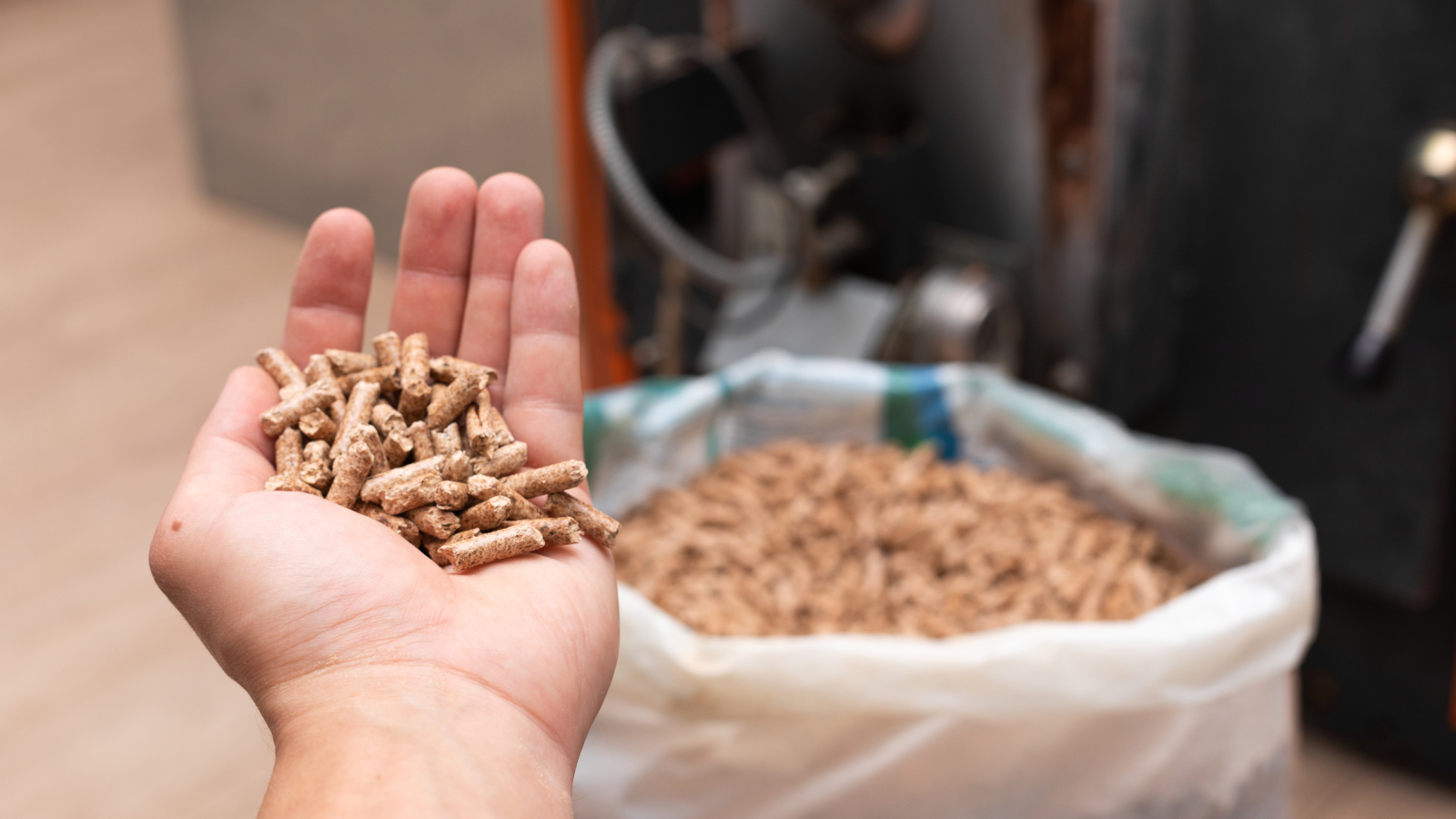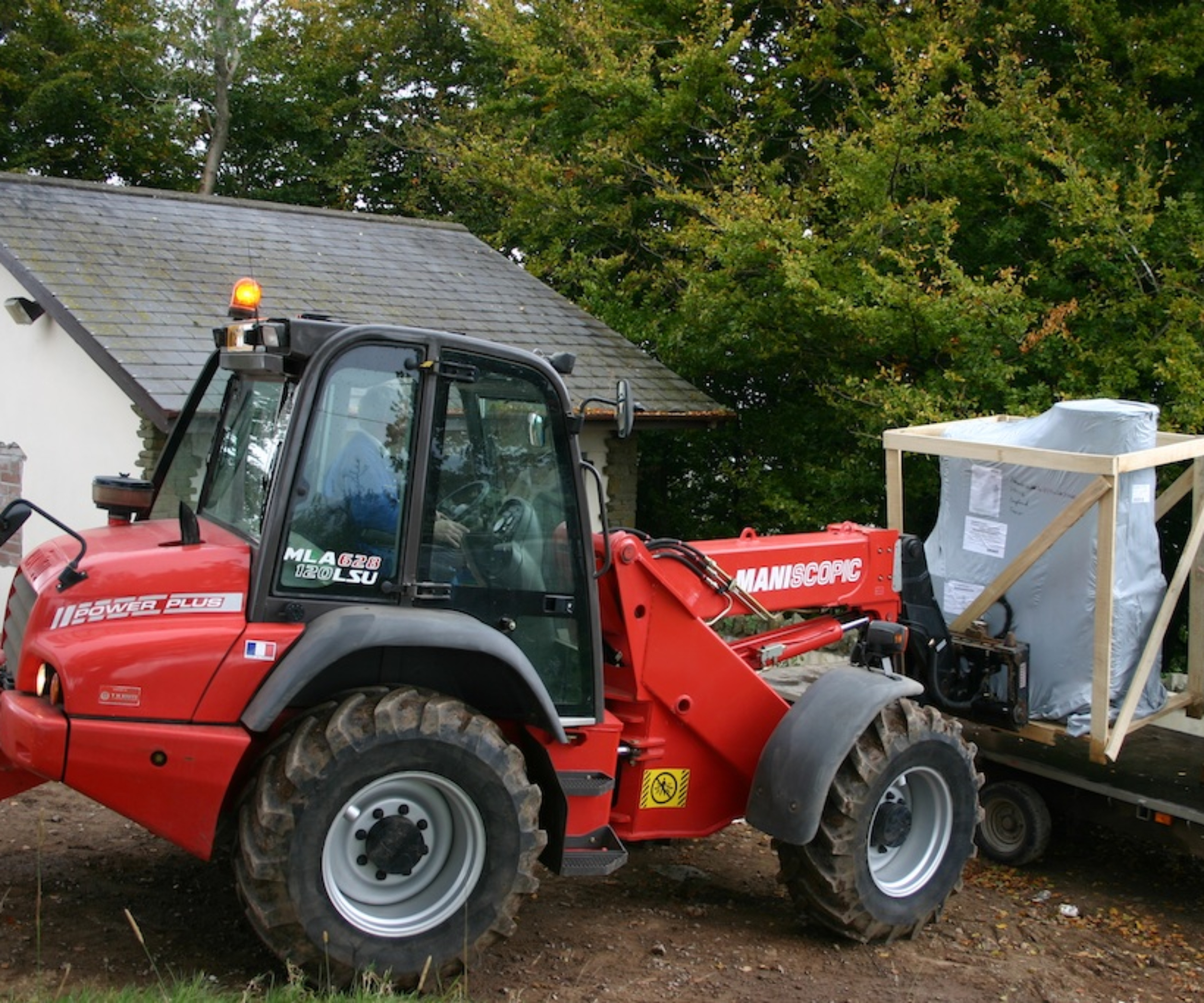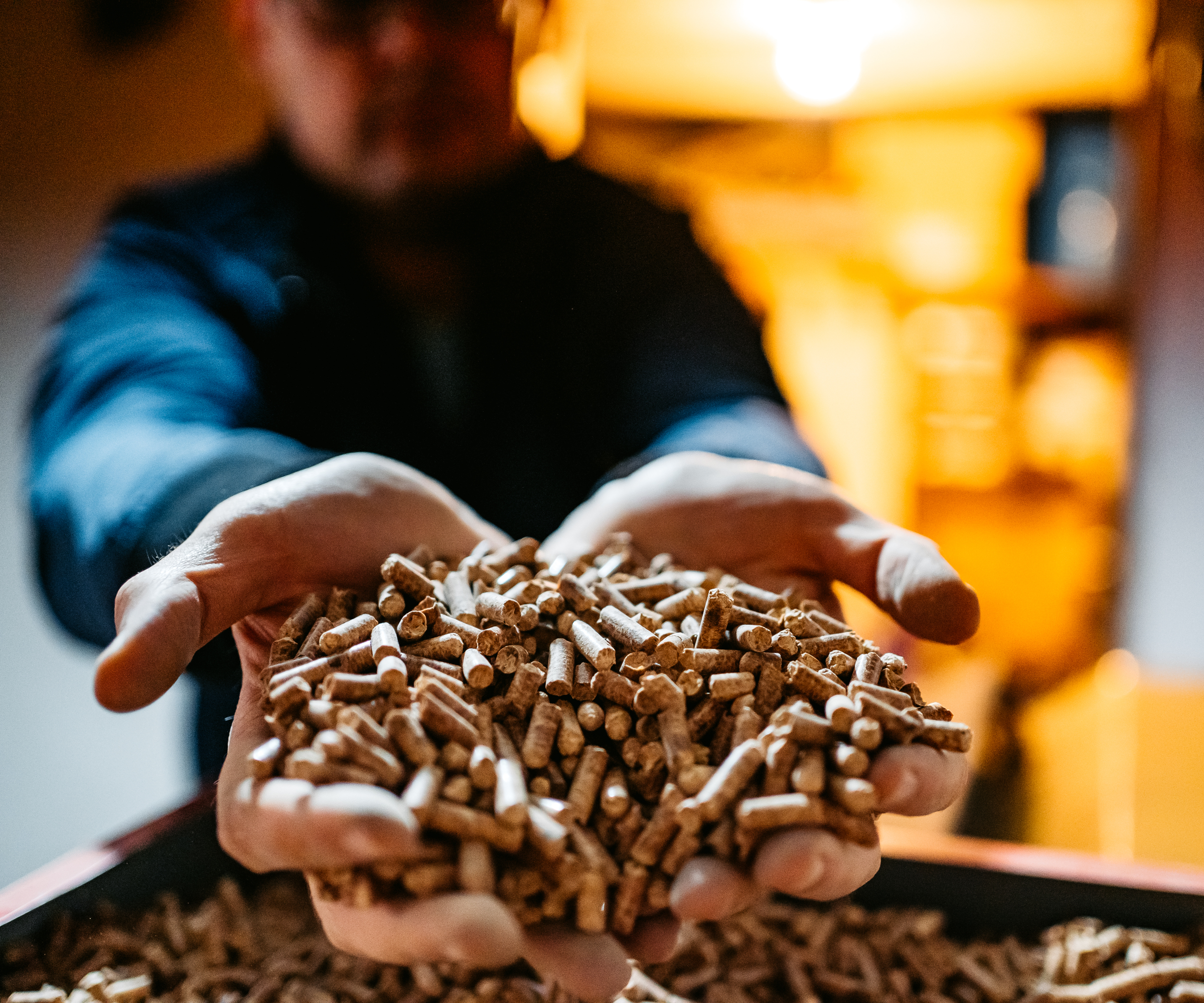Considering a biomass boiler? Here's 6 things I wish I'd known before I installed one in my home
Despite extensive research into renewables and heating, it still didn't prepare me fully for life with a biomass boiler. Here's what I wish I'd known before installing one

At the end of 2009 I moved into a Grade-II listed building I'd spend several years restoring and extending. And while we had done everything we could to ensure both the older building and new extension were as thermally efficient as they could be, heating a large home comes at a cost.
As the property wasn't connected to mains gas – instead relying on a very old oil-based heating system – I was keen to look at more renewable and eco-friendly options. After researching a number of options ranging from heat pumps through to biomass boilers, the latter eventually turned out to be the most cost-effective and tried and tested solution — at the time.
But, even with hours of research, actually living with a new system usually brings up a series of moments when you think 'if only I'd known that'. Not necessarily because you would dramatically change what you had done, but because when you're armed with the right facts, you can usually make most things work or run a little better.
Here, I share my hard-won wisdom regarding living with a biomass boiler in order to help you make an informed decision as to whether this is the right option for your home.
Why did I choose a biomass boiler?
Although the biomass industry has developed in the years since I installed my boiler, when it comes to the reasons why I chose biomass, many of the factors remain as true today as they were then.
While the installation costs were expensive, running costs were going to be cheaper than they were with fossil fuels. Connecting to the gas mains wasn't an option, leaving oil, LPG and heat pumps as the only options. As I was also on a quest for a more renewable energy, fossil fuels were never an option.
Why not heat pumps?
Installing a ground source heat pump was certainly feasible as there was enough land, but early calculations suggested it would be more expensive to install than biomass.
Bring your dream home to life with expert advice, how to guides and design inspiration. Sign up for our newsletter and get two free tickets to a Homebuilding & Renovating Show near you.
As we already knew we would have to have an archeologist on site when digging the footings in order to check for Roman remains, it also felt too risky. Had anything been discovered, we potentially would have been forced into finding an alternative system at a stage when the architectural plans and building regulations had been signed off.
Thankfully they didn't — just a few non-Roman tile remnants, a toy car and some Coke cans.
There was also the issue of finding floor space for a plant room to house everything in the house, whereas biomass could be located away from the house.
And while air source heat pumps have since evolved to become a popular choice for homeowners seeking a more carbon-friendly method of heating their homes, they weren't as common in the late 2000s and I struggled to find out enough about their cost, efficiency and ease of use.
As we were also dealing with a council, who at the time, was perhaps less forward thinking, adding one or more heat pump units to the exterior of a listed building would likely have caused a further issue at planning.
With all things considered and based on the amount of energy we would need to generate in order to power a wet central heating system in the listed building, underfloor heating in the new extension and hot water throughout, our only non-fossil fuel option was a commercially sized biomass boiler.

Six things I wish I'd known
1. Always check your access route
As there was a lot expected from the biomass boiler in terms of the amount of heating and hot water it had to generate, a commercially sized boiler was the only option available. This meant we had to house not just a large boiler, but also a five tonne fuel store for the wood pellets. These would need to be blown into the store via a pipe connected to the delivery truck. These then automatically fed into the boiler hopper when it called for fuel to burn.
The boiler hopper could be topped up by hand, but this wasn't necessary as long as the store was full.
It seemed a great solution on paper and one which meant we didn't have to load bags of pellets by hand. The only problem? We lived along a narrow country lane, and as well as the width of the lane being quite tight, it was also lined with low-hanging trees and had one or two tight bends.
At the time, we didn't think to check how big a delivery lorry carrying multiple tonnes of pellets would be. Turns out it's not just wide, but also very high. But we didn't find this out until we moved in and needed to stock up on pellets.
Some truck damage, angry drivers, a few refusals to deliver to the address and lots of phone calls meant we eventually found a supplier who could accommodate us, but it was unnecessary stress that could have been avoided with foresight.
Given biomass boilers are often cited in rural locations, it's always worth checking in advance with potential suppliers to find out more about their trucks. The same applies if you are ordering bags of pellets too. If you're ordering in bulk to benefit from cost savings, this will mean a pallet truck being able to access your property.
2. Not all pellets are created equally
It's easy to think all wood pellets are the same — but they're not. Industry standards exist for a reason. Buy cheap pellets and you run the risk of them being different sizes or formed from the wrong type of timber by-products.
It turns out even a few wood pellets that are just a few mms longer than the others can cause havoc when they're being drawn into the boiler from the hopper. They twist and turn as they're being sucked in and can end up lodging widthways, subsequently blocking the pipe.
Likewise, if your pellets aren't formed well and start to crumble, or haven't been dried correctly, they'll turn to dust and block the pipes, or clump together if damp and become impossible to feed into the boiler.
Do your research, make sure you're buying from a certified supplier — the details of how to find one are in our guide to what is biomass fuel.
This all leads nicely onto my next point: check your boiler and hopper frequently.
3. Check your biomass boiler more regularly than you think you need to
You need a separate space to house a biomass boiler and hopper; ours was located in a garage. It wasn't connected to the house but was easily accessible. However, out of sight out of mind can lead to the assumption that all is working well.
I'd advise you don't make the same mistake as me — especially given part of your biomass set up includes a thermal store or buffer tank which stores the heat and can do for quite some time if large enough. This means, even if your tank has stopped working or your fuel has run low, you will still have heat for quite a while before it runs out and you notice any problems.
For some reason, ours always ran out overnight making for some cold mornings with no heat or hot water. The fault log on the boiler would reveal the problem had occurred at least one day beforehand, but the back-up measures in place meant we still had heat. All very good, until the thermal store runs out too.
As a result, during the winter, I ended up popping into the garage every few days to make sure it was all still working well and to negate any issues. At the time, it also wasn't easy to get deliveries quickly, so visually checking pellet levels was essential to avoid last-minute bagged deliveries which were more expensive than bulk blown-in orders.

4. Don't underestimate how dusty pellets are
Wood pellets may well be compressed and appear dust-free on the surface, but when blown in or loaded into a boiler, they will create more dust than you imagine.
The inside of the garage was quite rough and ready and given it was only being used as a plant room, we didn't consider making any improvements. There were visible trusses, breeze block walls and while it had been cleared of most items, we did try storing bikes and garden toys in there. It was short-lived.
I soon learnt smooth walls and floors and covered storage would have been preferable as it was hard to maintain the dust levels. A commercial or older vacuum (check out our round-up of best vacuum cleaners for dust) is a must in the area to keep the space clean, as is wearing old clothes when clearing blocked pipes, loading pellets or emptying ash.
5. Have somewhere to dispose of the ash
As a result of burning the fuel, you'll have ash to dispose of on a regular basis. How often depends on the size of your boiler and how much fuel you burn. As an aside, if you don't empty it, your boiler will switch off for safety reasons, so it's worth including a quick visual check in your routine rather than waiting for it to become full.
There are a number of ways you can dispose of the ash. My top tip would be to make sure that whichever option you choose is close by.
It can usually go into your garden recycling bin (not always ideal given some councils only collect during spring to early autumn), be disposed of at your local tip (again into garden refuse areas), or you can use it on your garden.
All great options, but ash is dark, dirty and dusty meaning it doesn't take much disturbance for it to spread far and wide. If disposing into a bin for collection, make sure it's outside but located close to the garage. Would I have transported mine to a tip — absolutely not. You can use it on your garden, as I did, so visit the RHS for ideas on how to use it in your compost heap to make a great fertiliser.
6. If running high and low temperature emitters from one source, understand what can be achieved
A biomass boiler is capable of producing high temperatures which is why it is often considered a good option for older homes with radiators rather than underfloor heating.
However, if you are planning on using your biomass for the dual purpose of supplying heat to radiators and underfloor heating, you'll need to make sure your manifolds are set up in the right way. Underfloor heating needs a lower temperature than radiators meaning you could fall into problems with one of the emitters being too warm or too cold.
On our system, I do remember there being some issues with getting the balance right between the two. For that memory alone, I'd urge you to make sure you have lots of conversations with your installer about how your biomass boiler will service both systems efficiently.
I've been asked if I would install a biomass boiler again and if the circumstances were the same, I'd certainly consider it — although there's no doubt it's an expensive option and one which you are more likely to choose based on environmental preferences rather than cost. However, I'd also have some caveats in place before forging ahead.
I'd do a lot more research into where I could obtain fuel, more investigation into how best to install and operate it to serve both an old and new property, and I'd be far more aware of the seasonal peaks involved in needing wood pellets. During the spring and summer we could go for months without needing a top-up, but come winter we'd need several deliveries and this was problematic during cold peaks when everyone was doing the same.
Research and planning are key when working with a system that's not as well understood as other types.

Sarah is Homebuilding & Renovating’s Assistant Editor and joined the team in 2024. An established homes and interiors writer, Sarah has renovated and extended a number of properties, including a listing building and renovation project that featured on Grand Designs. Although she said she would never buy a listed property again, she has recently purchased a Grade II listed apartment. As it had already been professionally renovated, she has instead set her sights on tackling some changes to improve the building’s energy efficiency, as well as adding some personal touches to the interior.
